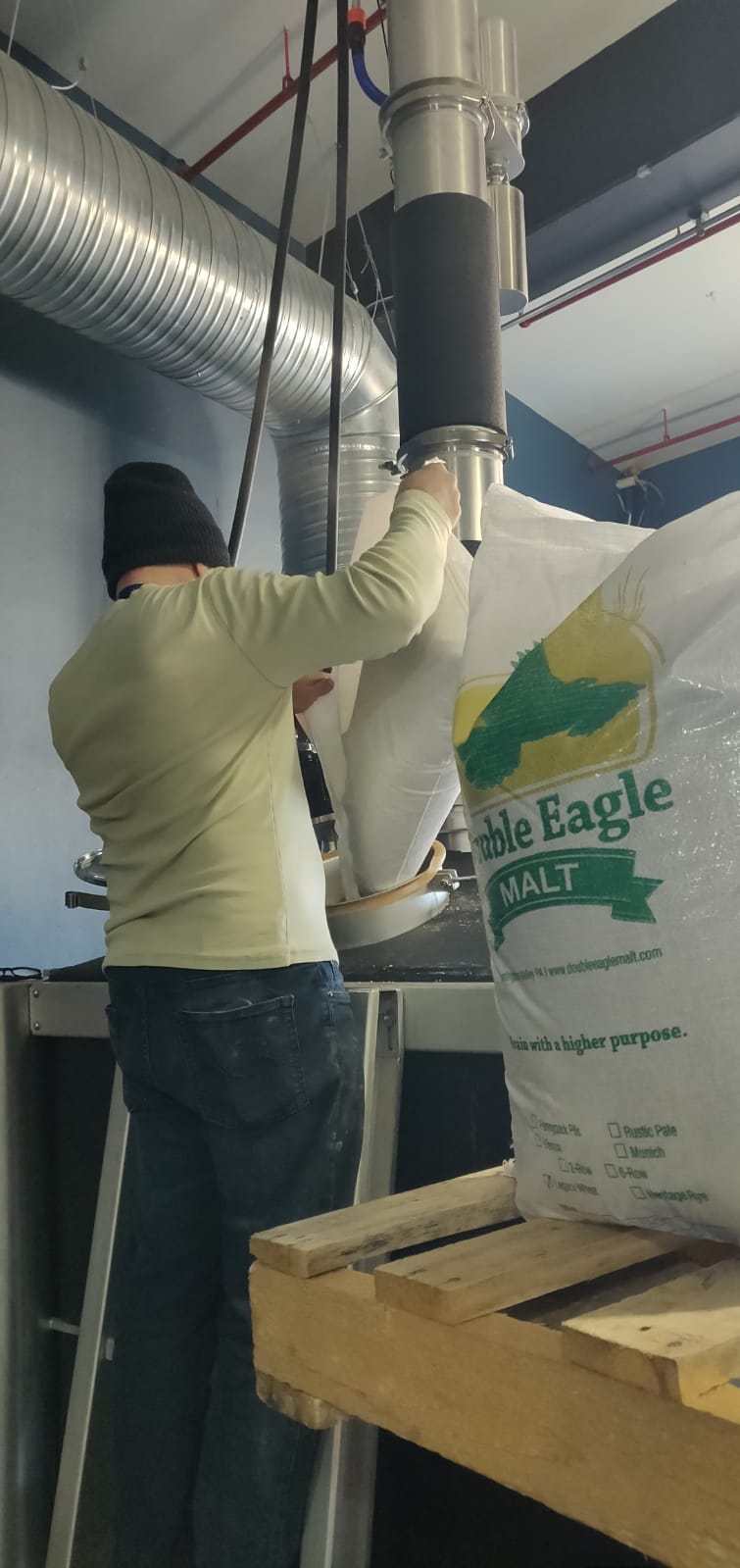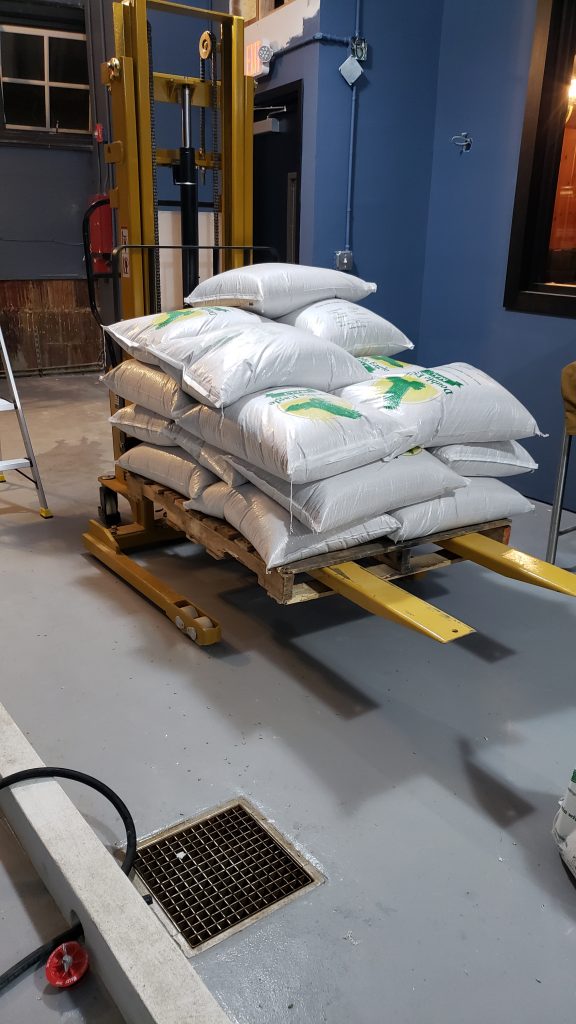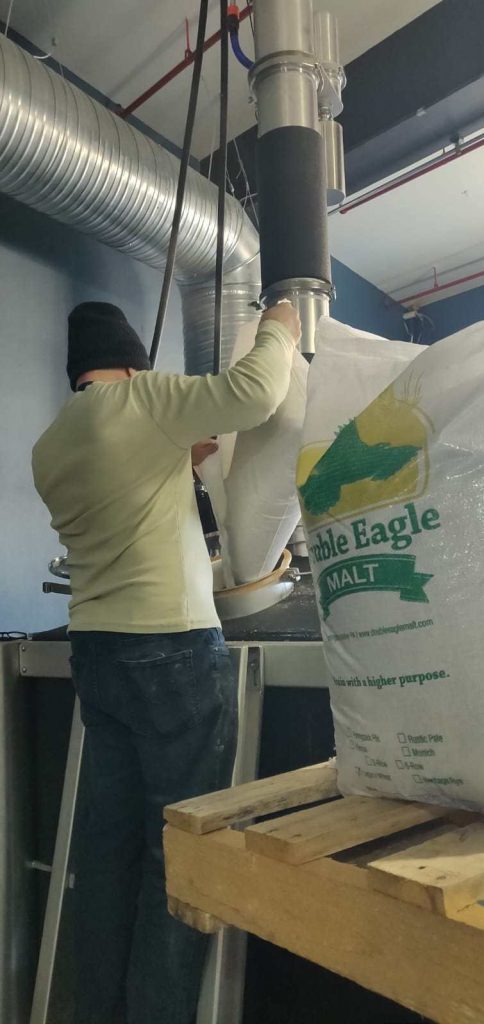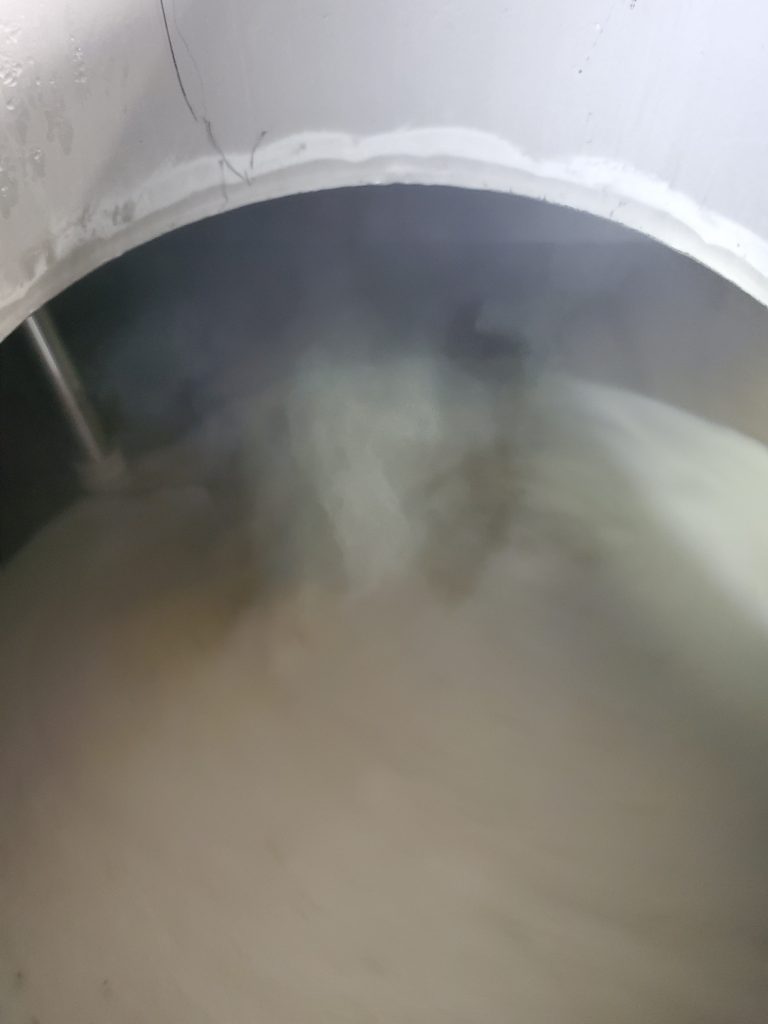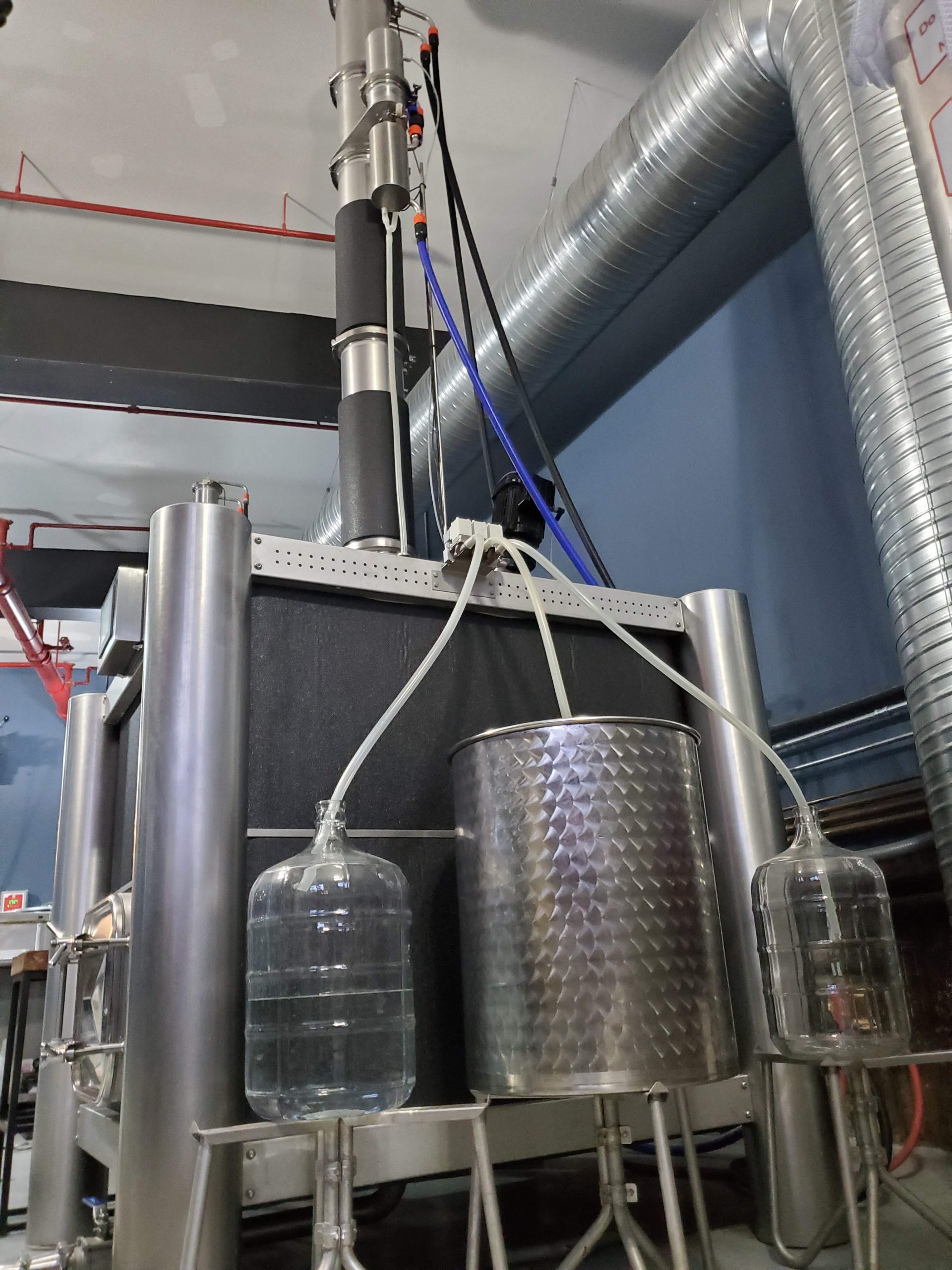
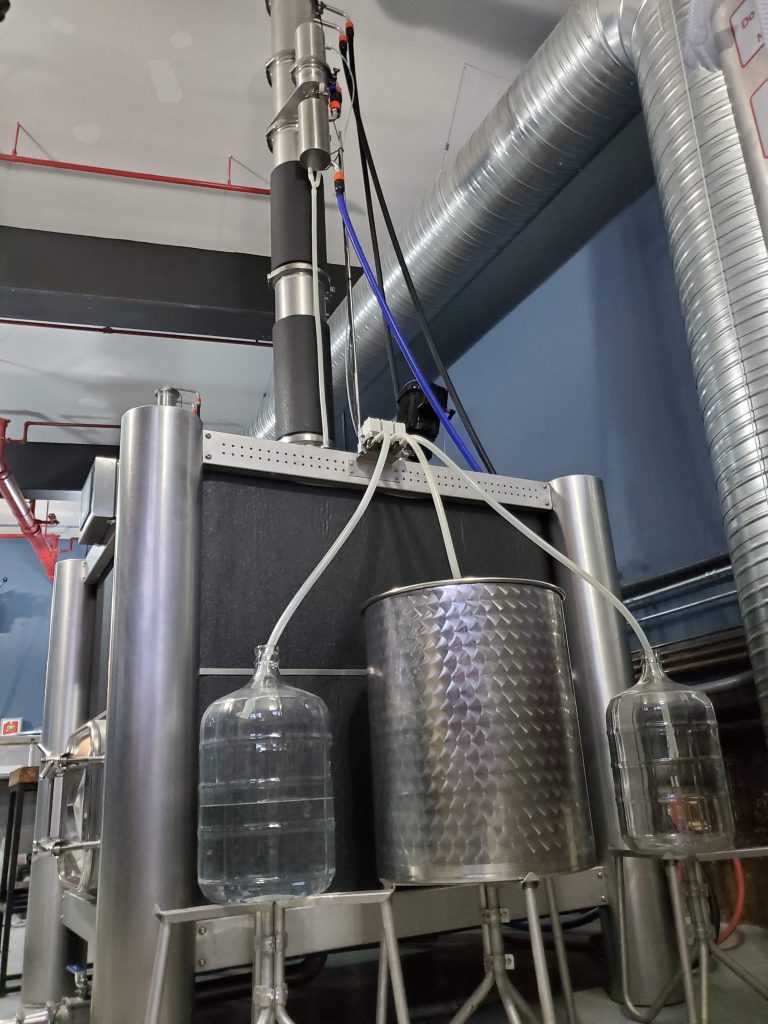
After fermentation is complete, we are left with a soupy, grainy solution that now contains alcohol anywhere from 8-10%, due to the yeast doing its job. This solution, or ‘distillers beer’, also referred to as a wash (when the grains are removed by straining them) is technically referred to as low wines (although we’re not sure where that came from). We choose to distill on the grains – we don’t remove them – because we feel it helps create a deeper flavor profile.
When we perform our first distillation – called a ‘Run’ – it is referred to as a stripping run, because we concentrate and strip all of the alcohol out of the wash. Different alcohols come over at different temperatures and in this run, we want to collect them all – the good, the bad and the ugly. We do this by heating up the wash between 75 and 94 celsius to concentrate and collect all the alcohol – the photo below shows 3 hoses from each of our collection valves, but we could put all of the hoses into one tank because we’re not concerned about separating alcohol in this run. In our next post you’ll see why we use the glass jars (carboys). With our iStills, the stripping run can take anywhere from 12-14 hours and produces alcohol in the range of 50-55% Alcohol By Volume (ABV), depending on the spirit we are distilling.
That’s all for now, in our next post we’ll discuss performing a ‘Finishing Run’, where we separate the alcohols collected in the Stripping Run into ‘Heads’, ‘Hearts’ and ‘Tails’.

